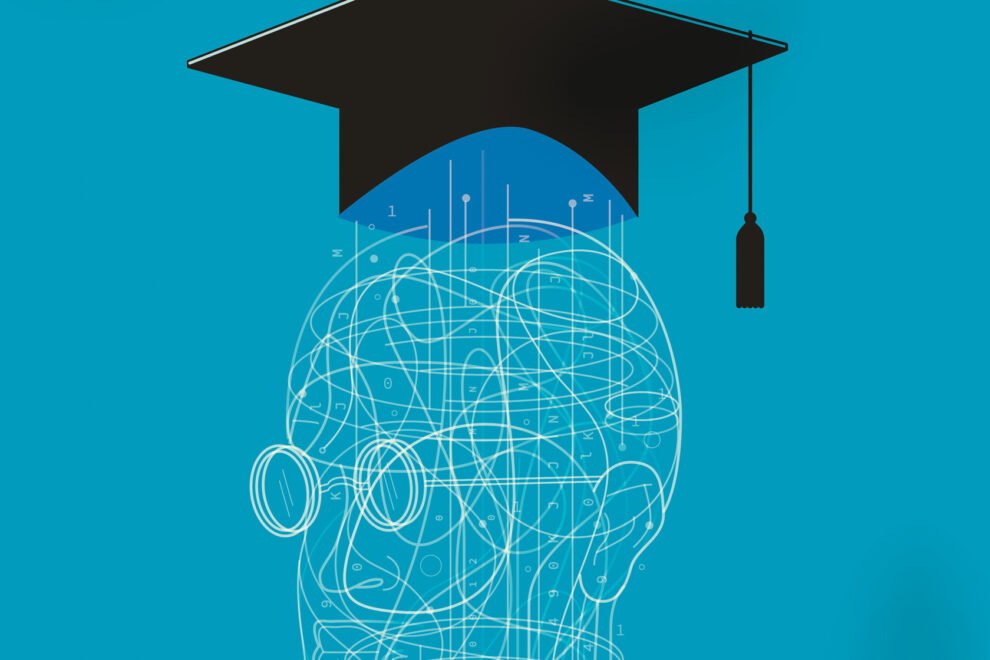In a world rapidly embracing artificial intelligence, the lines between human and machine are becoming increasingly blurred. As students turn to AI writing tools to complete assignments, professors are left grappling with the challenge of ensuring academic integrity. AI detection software, designed to identify AI-generated text, has become a popular tool for educators. However, the use of such software raises ethical and pedagogical concerns, transforming professors into digital detectives and creating a system where technology dictates the terms of learning.
The Rise of AI Detection and the Professor’s New Role
The emergence of AI detection software has been fueled by the growing sophistication of AI writing tools. With tools like ChatGPT and Jasper capable of producing high-quality essays and research papers, professors are finding it increasingly difficult to distinguish between student-written and AI-generated work. AI detection software promises to solve this problem, but at what cost?
- The Surveillance State in Academia: The use of AI detection software turns classrooms into surveillance zones, where every piece of student work is scrutinized for signs of AI assistance. This creates an atmosphere of distrust and suspicion, undermining the student-teacher relationship.
- The Tech-Driven Pedagogy: By relying on AI detection software, professors are inadvertently allowing technology to dictate the terms of learning. Instead of focusing on fostering critical thinking and creativity, the emphasis shifts to policing student work for signs of AI intervention.
- The False Positives and the Burden of Proof: AI detection software is not infallible. It can generate false positives, flagging student-written work as AI-generated. This puts the onus on students to prove their innocence, creating an unfair and stressful learning environment.
Technology as a System of World-Making
The use of AI detection software in academia highlights a broader trend: the increasing influence of technology in shaping our world. Technology is no longer just a tool; it’s a system of world-making, dictating the rules of engagement in various spheres of life.
- The Power Dynamics: Technology often reinforces existing power structures. In the case of AI detection software, it gives professors more control over students, creating a system where technology is used to maintain the status quo.
- The Ethical Considerations: The use of technology raises ethical questions that are not always easy to answer. Is it ethical to use AI detection software to monitor student work? Does it violate student privacy? These are questions that educators and policymakers need to grapple with.
- The Unintended Consequences: Technology often has unintended consequences. The use of AI detection software, for instance, could discourage students from using AI tools for legitimate purposes, such as brainstorming or research assistance.
My Personal Experiences
As an educator, I have witnessed firsthand the impact of AI detection software on the classroom environment. I have seen students become anxious and stressed about the possibility of their work being flagged as AI-generated. I have also seen professors struggle to balance the need for academic integrity with the desire to foster a positive learning environment.
The Way Forward: Striking a Balance
The use of AI detection software is a complex issue with no easy solutions. However, there are steps that educators and institutions can take to mitigate its negative impacts.
- Transparency and Communication: Professors should be transparent with students about the use of AI detection software and its limitations. They should also create opportunities for open dialogue about the ethical and pedagogical implications of using such software.
- Focus on Learning Outcomes: Instead of relying solely on AI detection software, professors should focus on assessing student learning outcomes. This means designing assignments that encourage critical thinking, creativity, and original thought, making it difficult for AI tools to replicate.
- Embrace AI as a Learning Tool: Instead of viewing AI as a threat, educators should explore ways to integrate it into the learning process. AI tools can be used for research assistance, brainstorming, and even generating creative writing prompts.
- Develop Ethical Guidelines: Institutions should develop clear ethical guidelines for the use of AI detection software. These guidelines should address issues such as student privacy, transparency, and the burden of proof.
The rise of AI detection software presents a challenge for educators and institutions. It’s essential to strike a balance between ensuring academic integrity and fostering a positive learning environment. By embracing transparency, focusing on learning outcomes, and integrating AI as a learning tool, we can navigate this new technological landscape while upholding the values of education.










Add Comment